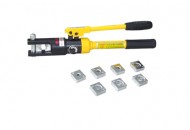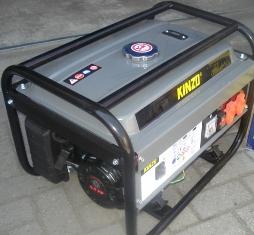Varieties of electrical equipment
 The market for electrical work is constantly evolving, which means that the requirements for the corresponding tool are also growing. A professional tool should be versatile, convenient, safe and have a long service life. The speed of work and the productivity of the installer depend on these qualities. Let's look at some types of wiring tools.
The market for electrical work is constantly evolving, which means that the requirements for the corresponding tool are also growing. A professional tool should be versatile, convenient, safe and have a long service life. The speed of work and the productivity of the installer depend on these qualities. Let's look at some types of wiring tools.
 The crimping tool can be mechanical or hydraulic. A manual mechanical press is used for crimping cable lugs with a cross section of 6-240 sq. mm. By design, this happens with built-in and replaceable dies. The purpose of the hydraulic manual press is also the pressing of tips, but already with a cross section of 4-1000 square mm. (e.g. PRG-120 is designed for a cross section range up to 120 sq.mm). Crimping pliers are required for crimping insulated terminals.
The crimping tool can be mechanical or hydraulic. A manual mechanical press is used for crimping cable lugs with a cross section of 6-240 sq. mm. By design, this happens with built-in and replaceable dies. The purpose of the hydraulic manual press is also the pressing of tips, but already with a cross section of 4-1000 square mm. (e.g. PRG-120 is designed for a cross section range up to 120 sq.mm). Crimping pliers are required for crimping insulated terminals.
The cutting tool is used for cutting copper and aluminum cables with a diameter of up to 130 mm. The hydraulic one, unlike the mechanical one, is professional, it is more reliable, safe and compact.The design assumes a built-in or external pump. Hydraulic perforators — for drilling holes in metal.
Tire work tools include: cutting equipment — hydraulic and sector tire cutters; for bending - mechanical, hydraulic shinogibs, with built-in and external pump, with electric drive; for perforation-press punchers ShD-20, ShD-60, ShD-70. A powder gun is used to drive dowels into concrete, reinforced concrete, bricks for fixing electrical and plumbing equipment, doors and grills on them. A dust knife is used to cut high voltage wires.
To protect power supplies and devices there are: transformers, voltage stabilizers and uninterruptible power supplies. A transformer is a device that converts alternating voltage (single-phase, three-phase). Power transformers step down or step up voltage and are used in automation systems, electrical networks and radio equipment. Measurement — determines the highest voltage and current. The uninterruptible power supply supplies electricity to computers and other household appliances in the event of a mains voltage failure, protects against overload.
A voltage stabilizer protects electrical appliances from all problems in the electrical network. It works automatically, without human intervention and is especially indispensable in industrial enterprises with expensive equipment.

